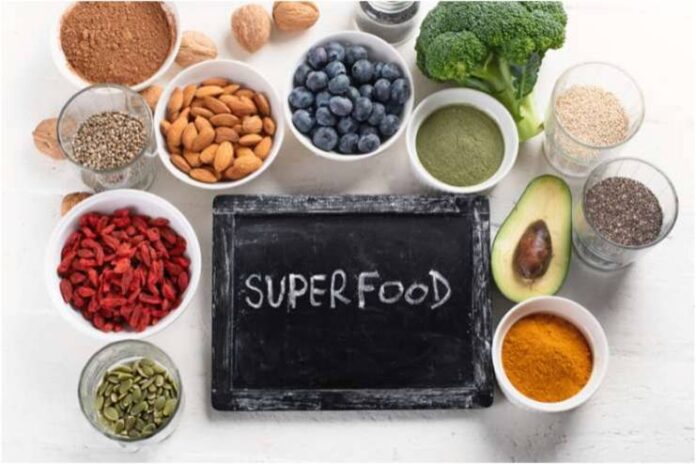Affiliate Disclaimer
Some links in this article are affiliate links. We may earn a small commission if you make a purchase through these links, at no extra cost to you. We only recommend products we find useful to our readersSuperfoods are an enthralling patchwork of tastes and nutrient-dense marvels. Envision a world where each morsel entices your palate and provides your body with many health advantages—greetings from the fascinating world of superfoods, where the unusual meets the commonplace.
What Makes a Superfood?
“A food (like salmon, broccoli, or blueberries) that is rich in compounds (like antioxidants, fiber, or fatty acids) considered beneficial to a person’s health” is the definition of a superfood. It guards against a variety of chronic, noncommunicable illnesses, including cancer, diabetes, and heart disease. A balanced diet should include various foods low in sugar, salt, and industrial trans fats.
The idea of superfoods—undeniably powerful foods praised for their extraordinary health benefits—lays the foundation for the nutritional revolution. Superfoods are nutrient-dense marvels that are full of vital substances that support general health, such as antioxidants, vitamins, minerals, and other chemicals.
To define superfoods, one must comprehend how their rich nutrient profiles contribute to their exceptional capacity to improve health and fend against sickness. Superfoods are praised for their many benefits to a well-balanced diet, from enhancing immunity to promoting heart health.

As we delve deeper into the world of superfoods, it’s important to acknowledge a few familiar names that have grown to represent the pinnacle of nutritional brilliance. Consider the antioxidant-dense blueberries that have earned their superfood label or the leafy green champion kale. Setting the groundwork, these well-known superfoods emphasize the possible health advantages of including nutrient-dense foods in our regular diets.
8 Superfoods That You Should Try
Superfood 1 – Camu Camu
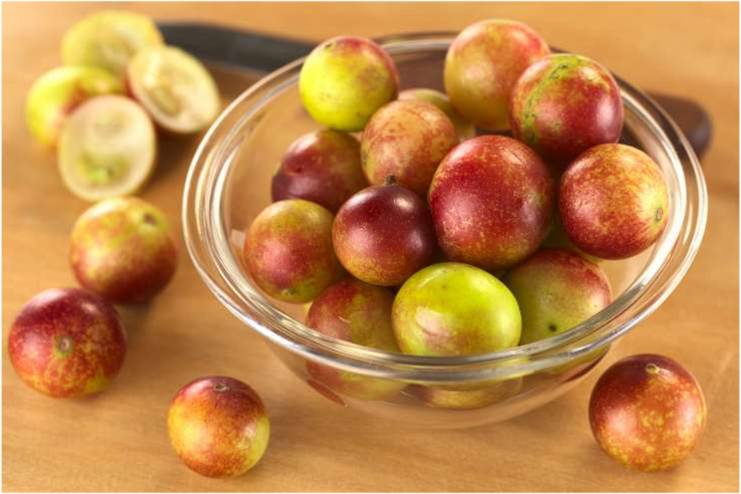
Originating in the lush rainforests of the Amazon basin, Camu Camu is a nutritional powerhouse that captivates fans with its exotic appeal. This little, tart fruit comes from the tropical regions of Brazil and Peru and is a genuine hidden treasure. Its voyage from the center of the rainforest to our tables assures us of a health and flavor explosion.
It bears rounded, 2.5-cm-diameter berries that hold one to four seeds each. The epicarp of M. dubia fruit is green while it is immature; however, as it ripens, anthocyanins and other phenolic chemicals cause the color to shift to reddish-purple. Camu consists of a complex matrix of volatile substances, minerals, vitamins (including C), fatty acids, and certain amino acids.
This antioxidant-rich profile supports healthy skin, a robust immune system, and general vitality. Furthermore, various vital minerals, such as manganese and potassium, support a well-rounded lifestyle in Camu.
Options range from tangy salad dressings to energizing smoothie bowls. Try this unusual fruit in savory and sweet recipes to bring out the spicy undertones and improve the flavor profile of your favorite meals.
Superfood 2 – Moringa
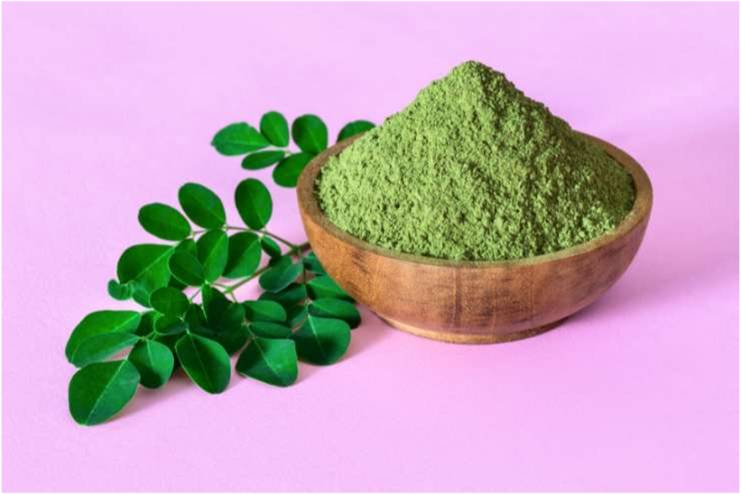
Introducing Moringa, the green powerhouse that defies description and goes by “drumstick tree” or “miracle tree.” Hailing from the foothills of the Himalayas, Moringa has traveled the world and been valued for its exceptional nutritional content. This humble tree produces leaves, pods, and seeds that contain abundant vital nutrients.
The nutritional profile of Moringa looks like a comprehensive health handbook. This superfood, loaded with vitamins, minerals, and antioxidants, has anti-inflammatory and antioxidant qualities. Moringa is well known for boosting bone health, regulating blood sugar, and bolstering the immune system. It proves the proverb “good nutrition equals good health” with its astounding assortment of nutrients.
A pleasant culinary adventure into healthful cooking awaits you when you incorporate Moringa into your everyday meals. Provide some Moringa powder to soups and salads for extra nutrition, or blend some Moringa leaves into smoothies for a bright green boost. Discover the earthy undertones of Moringa in tea or add it to savory foods to give the flavor profile a distinctive depth.
Superfood 3 – Sea Buckthorn
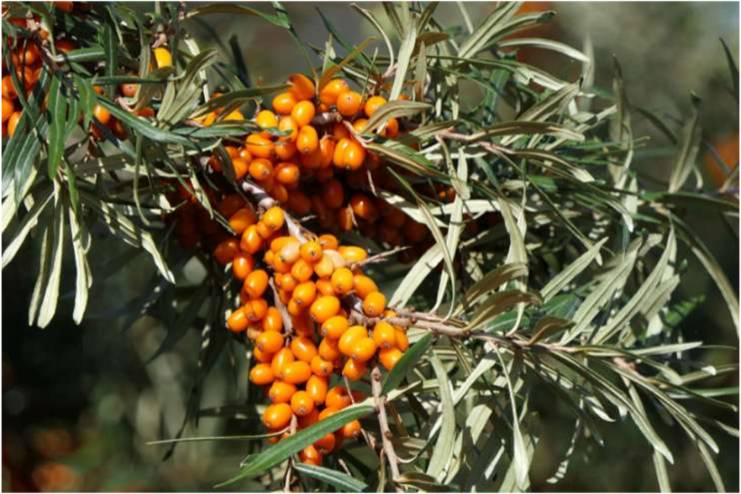
Explore the coastal regions where sea buckthorn is a superfood hero that goes unnoticed. This hardy orange jewel is a living example of how tough nature can be—it thrives in extremely cold and hot environments. With its vibrant berries, sea buckthorn resists the weather and shows itself as a nutritional powerhouse with many health advantages.
Hippophae rhamnoides L., a.k.a sea buckthorn, is a deciduous shrub rich in potassium, oleic acid, protein, amino acids, and other nutrients. It is also considered to have significant nutritional and medicinal value. In addition to treating various ailments, sea buckthorn can heal lung and heart conditions. To help manufacturers create and use sea buckthorn, this evaluation attempts to distinguish between traditional and current sea buckthorn cuisine.
Sea Buckthorn’s nutrient profile reads like a nutritious symphony, earning it the superfood title. Rich in vitamins C and E, omega-7 fatty acids, and several antioxidants, this seaside treasure supports a strong immune system and a healthy heart and skin. Combining these nutrients results in a comprehensive strategy for body nourishment from the inside out.
Sea Buckthorn’s distinct flavor profile will delight your senses. Its berries have a pleasing acidic-sweet ratio with a touch of zesty brightness. Accept the vivid color and strong flavor in various culinary endeavors—incorporate Sea Buckthorn into teas or cocktails, or up your morning game by adding its sour undertones to smoothie bowls or yogurt parfaits.
Superfood 4 – Purple Potatoes
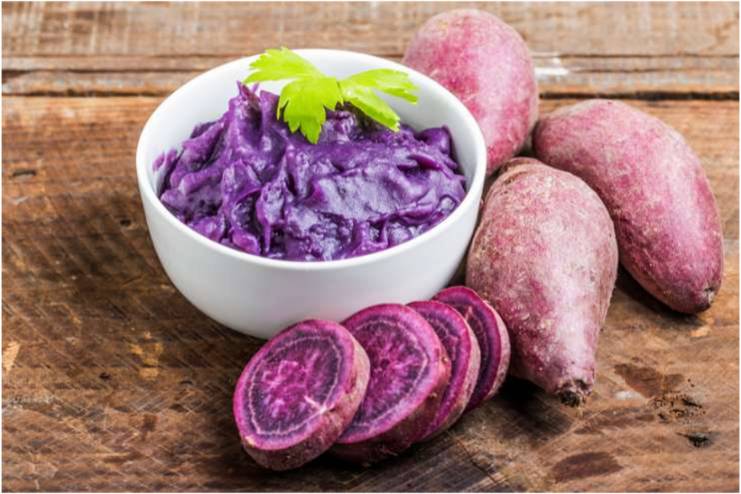
Discover the vibrant world of cooking with purple potatoes’ captivating appeal. These potatoes liven up the usual potato spectrum with their striking color. Purple potatoes are native to the Andes and have spread across continents, enticing cooks and foodies with their deep color and unique flavor.
They may be better for your blood sugar because they have a lower glycemic index than ordinary potatoes.
Many of these colorful potatoes’ health benefits, such as those about blood pressure and cancer prevention, are derived from their high anthocyanin content, which is an important antioxidant.
The potato evolved this pattern because of cross-pollination or because it’s (probably) natural for the cultivar you’re raising. Anthocyanin is the purple pigment. It is entirely acceptable and regarded as healthier (because those potato cultivars have higher levels of antioxidants and vitamin C) and even “gourmet.”
Purple potatoes are not just visually appealing; they are nutrient-dense and have several health advantages. These bright tubers support heart health, cognitive function, and general well-being since they are loaded with anthocyanins, the same antioxidants in blueberries.
Add some royal beauty to your cooking by using purple potatoes. Roast them till crispy for a tasty side dish or mash them to make aesthetically pleasing and savory mashed potatoes, or thinly slice them to produce eye-catching purple potato chips. Their adaptability allows their rich flavor and vivid color to enhance your salads, soups, and casseroles.
Superfood 5 – Amaranth
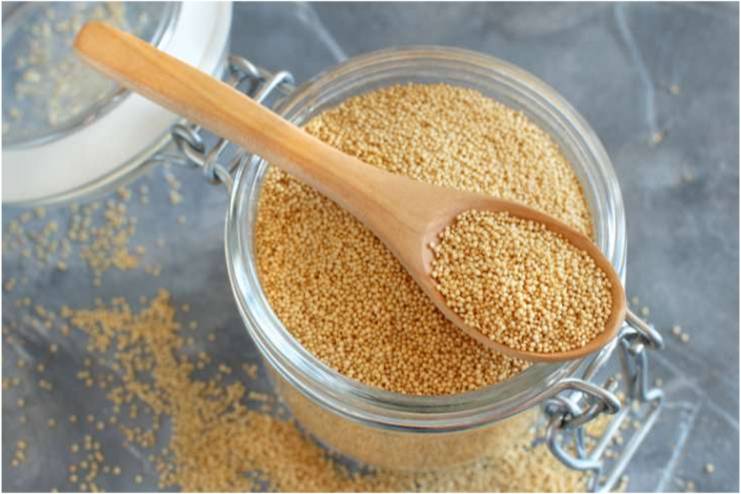
Experience a timeless gastronomic voyage using Amaranth, an age-old grain assiduously incorporated into the contemporary wellness landscape. With origins dating back thousands of years to the Aztec civilization, Amaranth is a grain that is both adaptable and nutrient-rich, and it has endured over time to provide a lasting contribution to modern, health-conscious life.
An edible plant that grows well in tropical and subtropical regions, Amaranth has important cultural traits like rapid growth and drought-tolerant cultivation. Amaranth leaves and grain provide a high concentration of bioactive chemicals, low antinutritional agents, and considerable nutritional value. These compounds may have antihyperglycemic, antihyperlipidemic, and antioxidant properties, among other health benefits.
Among the superfoods, Amaranth is a formidable contender. This little grain packs a powerful nutritional punch since it is high in fiber, protein, and vital amino acids. Amaranth is a beautiful supplement to a well-balanced diet because it strongly supplies minerals, including iron, magnesium, and phosphorus. Because Amaranth is gluten-free, it may accommodate a wide range of dietary requirements, and its nutritional advantages are available to anyone.
Start your day with a filling bowl of amaranth porridge garnished with almonds and fresh fruit. Taste its nutty flavor and creamy texture as a nutritious side dish or in salads and soups. Explore the world of amaranth flour and create a range of gluten-free baked goods, such as delicious energy bars and wholesome pancakes.
Superfood 6 – Black Garlic

Explore the fascinating world of black garlic, a gourmet delicacy that slow fermentation transforms into something extraordinary. This flavorful treat originated in Asia and is a monument to the elegance of patience and meticulous preparation. Through fermentation and maturing, what begins as white garlic bulbs transform into dark, sweet, and umami-rich cloves, adding a distinct richness to their flavor profile.
Allium sativum L., or fresh garlic, fermented at a high temperature and high humidity for a certain amount of time, is known as black garlic (BG). Due to the procedure, garlic cloves get dark in color, acquire a sweet flavor, and become chewy and jelly-like.
Black garlic (BG) is a processed garlic product made by heating whole garlic bulbs (Allium sativum L.) for many days at a high temperature and high humidity, producing sweet-tasting black cloves. The Korean market has just been exposed to BG as a health-beneficial substance. BG’s physicochemical properties, antioxidant contents, and activities were assessed under controlled settings of 70 °C and 90% relative humidity to show how BG evolves throughout the 35-day aging period.
Beyond its delicious flavor, black garlic offers many possible health advantages. Rich in antioxidants, it may help maintain immune system function, promote heart health, and improve general well-being. A well-balanced diet can benefit from the tasty and nutrient-dense black garlic since the fermentation process increases the bioavailability of specific components.
Add a unique taste to your dishes by incorporating black garlic. Spread it over toasted bread, whisk it into sauces to provide a deep umami flavor, or marinate meats and veggies. Add some black garlic to stir-fries, salad dressings, or even as a novel pizza topping to liven up your meals.
Superfood 7 – Sacha Inchi
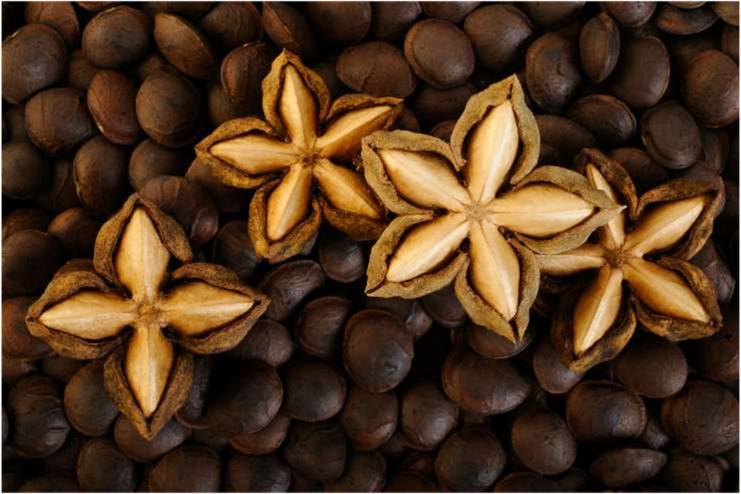
Discover the mystery of Sacha Inchi, a lesser-known superfood that has quietly gained its reputation as a nutritious powerhouse. Sacha Inchi, commonly referred to as “Inca peanut,” is a native of the Amazon rainforest (symbol of the diversity of life). It has a distinct flavor and nutritional profile.
Omega 3, 6, 9, and palmitate are abundant in commercial Sacha inchi oil. Tocopherol is also present in significant concentrations. The antioxidant tocopherol can stabilize oil oxidation processes. Stearic acid, phenyl alcohol, flavonoids, and sterols are also present in Sacha inchi.
Plukenetia volubilis, often known as sacha inchi, is indigenous to some regions of the Caribbean and South America. It yields a fruit that is grown for its big, tasty seeds. It’s also known as mountain peanut or Inca nut since indigenous populations in Peru traditionally ate it.
Explore the nutritional gold mine of Sacha Inchi, renowned for its high amount of Omega-3 fatty acids. These heart-healthy fats support cardiovascular health, mental clarity, and general well-being. Sacha Inchi seeds complement vegetarian and vegan diets because they offer a plant-based source of this essential fatty acid.
Sacha Inchi’s nutty goodness will up your snack game. You may add the seeds to salads for texture or incorporate them into smoothies for an added nutritional boost. Roast the seeds for a crunchy bite. Accept their adaptability and add Sacha Inchi to trail mix, granola, and energy bars to make healthy snacks that will fill your hunger and pack a nutritional punch.
Superfood 8 – Tiger Nuts
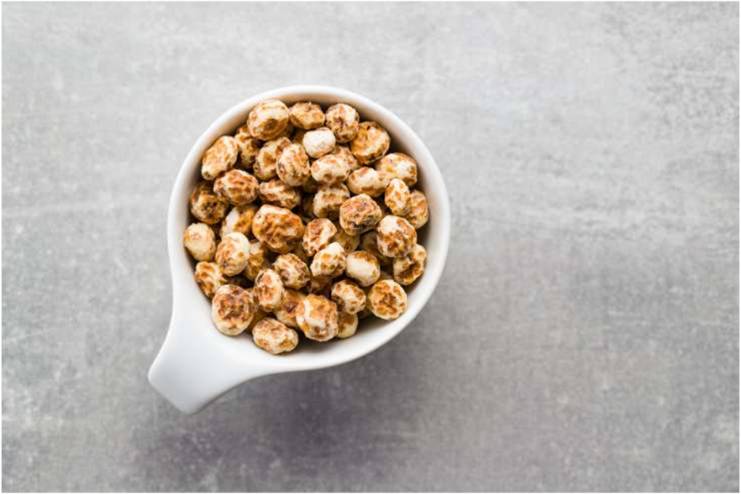
Take a trip back in time with Tiger Nuts, a simple superfood with a rich historical background. These tiny tubers, traced back to ancient civilizations, were a mainstay in our predecessors’ meals. Tiger Nuts, sometimes called earth almonds or chufa, have a centuries-long history and have established themselves as a nutritional powerhouse.
Tiger nuts treat various illnesses in Ayurvedic medicine, Africa, and China. A drink from Tiger Nuts called horchata de chufa is still used to treat diarrhea in Spain. Additionally, tiger nuts have a high antioxidant content. Tiger nuts may have been the primary source of nutrition for Paranthropus boisei, sometimes known as the prehistoric “Nutcracker Man.” Tubers were an important fruit to the ancient Egyptians and were used as food and medicine. They have been discovered in 6,000-year-old Egyptian tombs. They were consumed roasted, used in enemas, ointments, and beer production, among other uses by the Egyptians.
The small tuber of Cyperus esculentus L., known as the tiger nut, is consumed in Egypt as sweetmeat when roasted. Moreover, with a yearly production of 9,000 metric tons, it is a significant representative crop of the Spanish Mediterranean region.
Tiger Nuts are tiny, yet they’re mighty in terms of nutrients. Rich in dietary fiber, they promote digestive well-being and enhance feelings of fullness. These tiny marvels are also a good source of magnesium, potassium, and vitamin E, among other essential vitamins and minerals. Tiger Nuts are also naturally gluten-free and healthy for anybody following a restricted diet.
Explore Tiger Nuts’ culinary universe with inventive and delectable recipes. Add them to yogurt for extra crunch, blend them into creamy Tiger Nut milk for a dairy-free option, or bake them for a nutty twist.
Conclusion
Every superfood has something special, from the antioxidant-rich acai berries to the nutrient-rich moringa leaves. I urge readers to enjoy the rich variety of flavors that these superfoods have to offer.
References
- https://www.ucdavis.edu/food/what-makes-superfood-so-super
- https://www.medicalnewstoday.com/articles/303079
- https://specialtyproduce.com/produce/Camu_Camu_19105.php
- https://www.ncbi.nlm.nih.gov/pmc/articles/PMC9933082/
- https://www.ncbi.nlm.nih.gov/pmc/articles/PMC5745501/
- https://www.sciencedirect.com/science/article/pii/S2213453016300362
- https://www.sciencedirect.com/science/article/pii/S2772566923000046
- https://www.ncbi.nlm.nih.gov/pmc/articles/PMC8431556/
- https://www.healthline.com/nutrition/purple-potatoes#4.-May-improve-your-blood-pressure
- https://biology.stackexchange.com/questions/68464/potato-with-purple-veins
- https://www.sciencedirect.com/topics/agricultural-and-biological-sciences/amaranth
- https://www.ncbi.nlm.nih.gov/pmc/articles/PMC9333422/
- https://www.science.gov/topicpages/a/aged+black+garlic
- https://www.healthline.com/nutrition/what-is-sacha-inchi
- https://www.ncbi.nlm.nih.gov/pmc/articles/PMC9553689/
In this Article















